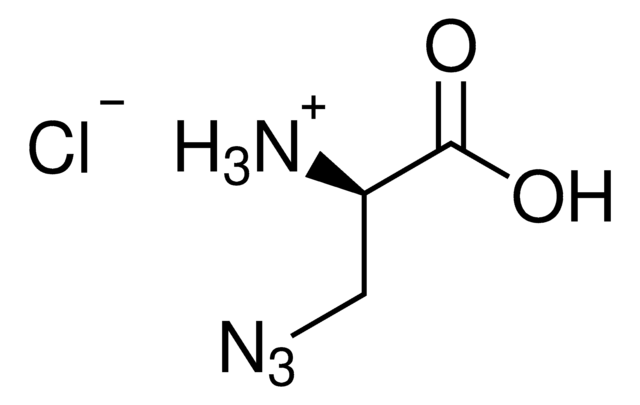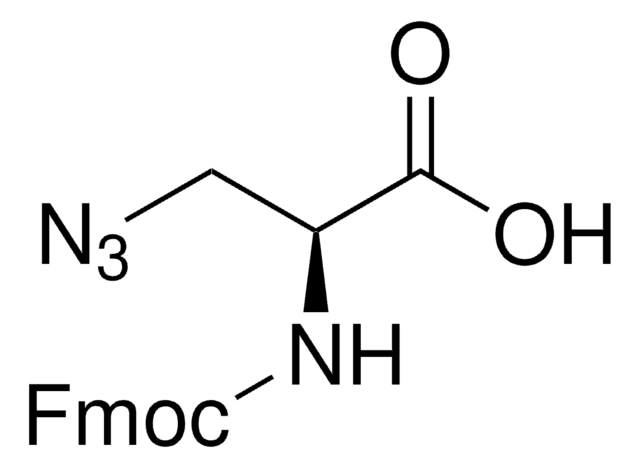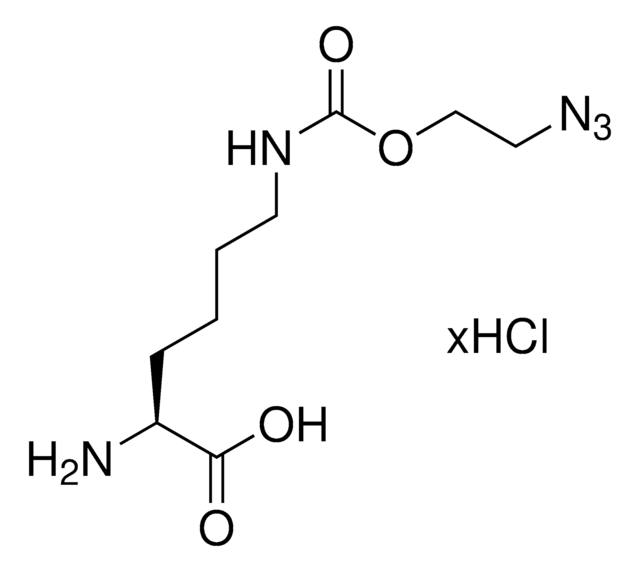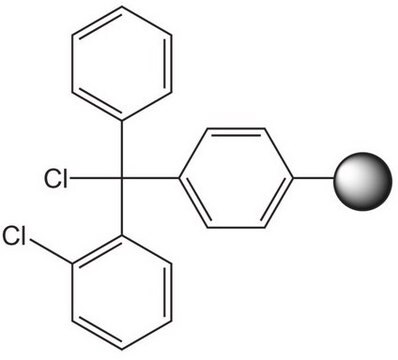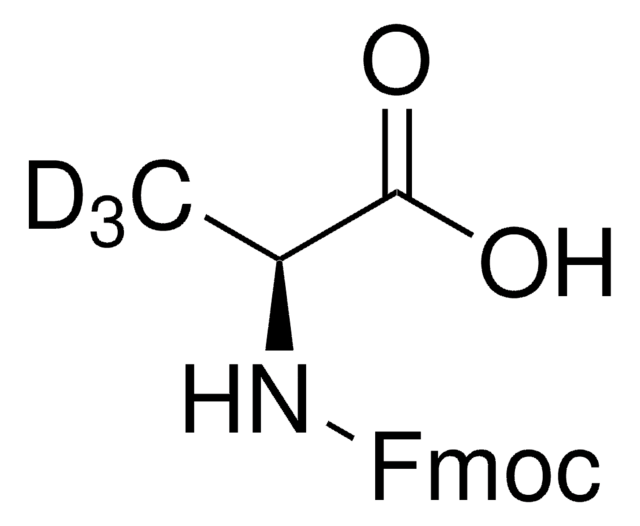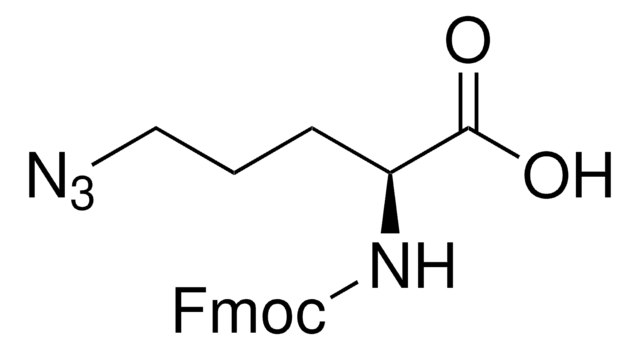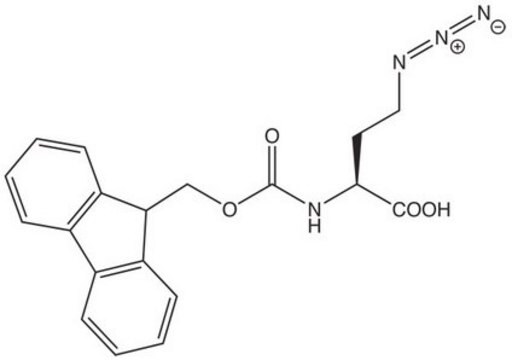900892
L-Azidohomoalanine hydrochloride
Sinónimos:
AHA
Iniciar sesiónpara Ver la Fijación de precios por contrato y de la organización
About This Item
Fórmula empírica (notación de Hill):
C4H8N4O2 · HCl
Número de CAS:
Peso molecular:
180.59
MDL number:
UNSPSC Code:
12352209
Productos recomendados
form
powder or crystals
Quality Level
reaction suitability
reaction type: click chemistry
mp
139 °C
storage temp.
−20°C
SMILES string
[Cl-].[N+H3][C@@H](CCN=[N+]=[N-])C(=O)O
InChI
1S/C4H8N4O2.ClH/c5-3(4(9)10)1-2-7-8-6;/h3H,1-2,5H2,(H,9,10);1H/t3-;/m0./s1
InChI key
MHHYJRIDKLZZEO-DFWYDOINSA-N
Categorías relacionadas
Application
L-Azidohomoalanine (AHA) is an amino acid analog of methionine that contains a very small modification, specifically an azido moiety. This compound can be fed to cultured cells and incorporated into proteins during active protein synthesis. Detection utilizes the chemoselective ligation or “click ” reaction between an azide and an alkyne or cyclooctyne. For example the azido-modified protein can be detected with either fluorescent alkyne or biotin alkyne. Detection sensitivity with these reagents in 1-D gels and Western blots is in the low femtomole range and compatible with downstream LC-MS/MS and MALDI-MS analysis.
related product
Referencia del producto
Descripción
Precios
signalword
Danger
hcodes
Hazard Classifications
Self-react. C
Storage Class
5.2 - Organic peroxides and self-reacting hazardous materials
wgk_germany
WGK 3
flash_point_f
Not applicable
flash_point_c
Not applicable
Elija entre una de las versiones más recientes:
¿Ya tiene este producto?
Encuentre la documentación para los productos que ha comprado recientemente en la Biblioteca de documentos.
Expanding the diversity of chemical protein modification allows post-translational mimicry.
van Kasteren S I, et al.
Nature, 446(7139), 1105-1105 (2007)
Teresa Rayon et al.
Science (New York, N.Y.), 369(6510) (2020-09-19)
Although many molecular mechanisms controlling developmental processes are evolutionarily conserved, the speed at which the embryo develops can vary substantially between species. For example, the same genetic program, comprising sequential changes in transcriptional states, governs the differentiation of motor neurons
Global Trade Item Number
| Número de referencia del producto (SKU) | GTIN |
|---|---|
| 900892-100MG | 4061833251362 |
Nuestro equipo de científicos tiene experiencia en todas las áreas de investigación: Ciencias de la vida, Ciencia de los materiales, Síntesis química, Cromatografía, Analítica y muchas otras.
Póngase en contacto con el Servicio técnico